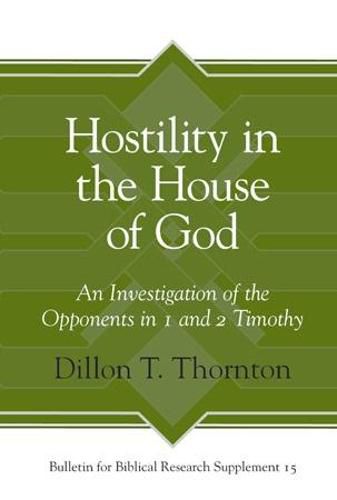Readings Newsletter
Become a Readings Member to make your shopping experience even easier.
Sign in or sign up for free!
You’re not far away from qualifying for FREE standard shipping within Australia
You’ve qualified for FREE standard shipping within Australia
The cart is loading…






Virtually all scholars acknowledge the presence of opponents in 1 and 2 Timothy, but there is considerable disagreement over the identity of these opponents and the author’s way of handling them. In this volume, Thornton provides a critique of a number of extant theories, including Gnostic, Jewish, and proto-Montanist identifications, and develops a rigorous methodology for unmasking the opponents who appear in these letters. He argues that the opponents came from within the Christian community in Ephesus and that their teaching is best described as an erroneous eschatological position that derived from the complexity of Paul’s views. He also argues that the author of the books of Timothy engaged with the false teachers in significant ways throughout the letters, and draws attention to a number of literary and theological maneuvers that were intended to counteract the opponents’ influence and/or to bolster the faithful community’s confidence as it struggled against the opponents. Thornton’s meticulous investigation sheds new light on the hostility that plays such a large part in 1 and 2 Timothy.
$9.00 standard shipping within Australia
FREE standard shipping within Australia for orders over $100.00
Express & International shipping calculated at checkout
Virtually all scholars acknowledge the presence of opponents in 1 and 2 Timothy, but there is considerable disagreement over the identity of these opponents and the author’s way of handling them. In this volume, Thornton provides a critique of a number of extant theories, including Gnostic, Jewish, and proto-Montanist identifications, and develops a rigorous methodology for unmasking the opponents who appear in these letters. He argues that the opponents came from within the Christian community in Ephesus and that their teaching is best described as an erroneous eschatological position that derived from the complexity of Paul’s views. He also argues that the author of the books of Timothy engaged with the false teachers in significant ways throughout the letters, and draws attention to a number of literary and theological maneuvers that were intended to counteract the opponents’ influence and/or to bolster the faithful community’s confidence as it struggled against the opponents. Thornton’s meticulous investigation sheds new light on the hostility that plays such a large part in 1 and 2 Timothy.